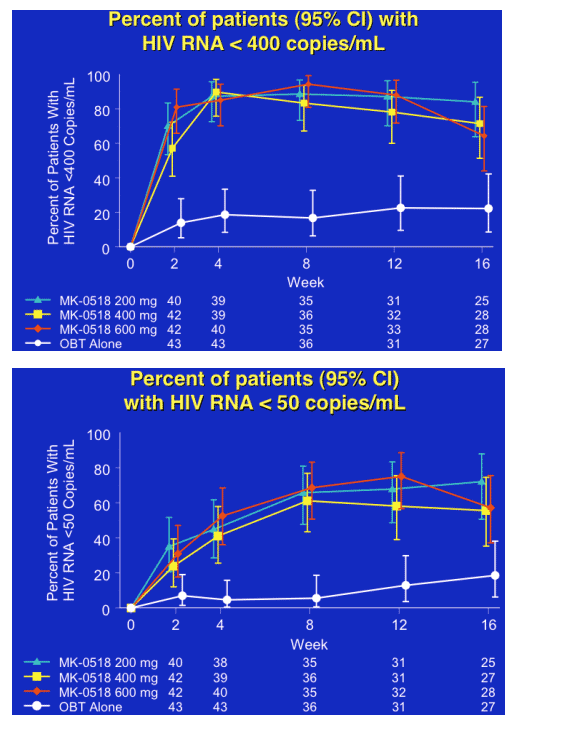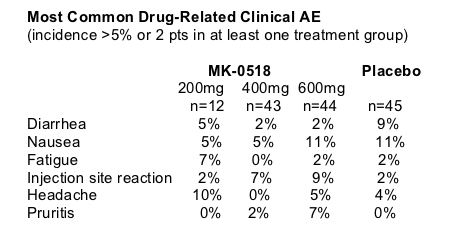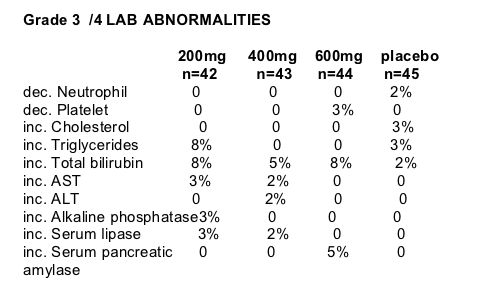 |
 |
 |
| |
Merck Integrase Inhibitor
|
| |
| |
Reported by Jules Levin
13th CROI (Retrovirus Conference)
Denver, Feb 8, 2006
The 13th CROI (Retrovirus Conference) is ending and this report comes to you after this mornings oral session on new drugs, where very exciting new data was presented on the Merck integrase inhibitor MK-0518, the Gilead integrase inhibitor, and new promising resistance data on TMC-125 and TMC-114. Merck has been working on development of an integrase inhibitor for 10 years and at times while waiting it was very frustrating, drug development is complicated and difficult.
Jules Levin's Top Ten From CROI
1. Merck integrase........
2. Gilead integrase inhibitor
3. TMC-114 & TMC-125 resistance data
4. New PI SPI-256 in preclinical development stage
5. Tenofovir data in monkeys preventing HIV sexual transmission
6. Two Next Generation once weekly fusion inhibitors in preclinical development stage
7. SMART Study reporting clinical progression for patient's taking interruption of HAART...
8. Study of Vicriviroc, the CCR5 inhibitor from Schering, in naive patients will be restarted looking at higher dosing....
"Potent Antiretroviral Effect of MK-5018, a Novel HIV-1 Integrase Inhibitor, in Patients with triple-class Resistant Virus"
author summary:
MK-0518 was well tolerated with few side effects reported and similar safety & side effects profile as observed in placebo patients. MK-0518 had potent antiviral activity with 56% to 72% of study patients, who were treatment experienced & considerable drug resistance, <50 copies/ml at week 16. Resistance evaluation is ongoing. Phase II global study is enrolling now & has liberal inclusion criteria: any CD$ count & >1000 HIV RNA. Merck will announce in mid-February a website where information about the study will be available.
B Grinszejn from Brazil reported the following information & data at the 13th CROI for the Protocol 005 Study team providing the first report on data for this new drug in a new class of HIV drugs since the monotherapy data was reported at Dublin Nov 2005.
HIV integrase inhibition is a new mechanism of action. MK-5013 has --
potent in vitro activity:
--IC95 = 33 nM±23 nM in 50% human serum.
active against:
--multi-drug resistant HIV-1
--CCR5 & CXCR4 HIV-1
--HIV resistant to MK-5018 remain sensitive to other ARTs
--synergistic with all ARTs
Potent activity in ART-naive patients after 10 days of monotherapy (reported at Dublin, EACS). HIV RNA decrease of 1.7 to 2.2 log copies/ml.
PRECLINICAL EVALUATION
--predominantly metabolized via glucuronidation (UGT1A1)
--not a potent inhibitor or inducer of CYP3A4: does not 'require' ritonavir boosting
--no substantive issues from preclinical studies
PHASE I
--data supported dosing 100-800 mg orally twice daily without regard to food: at 100mg bid, mean C12hr>IC95
--drug interaction studies support dosing of MK-5018 with other ARTs without dose adjustment
PROTOCOL 005 - STUDY DESIGN
Randomized, double blind
200, or 400, or 600 mg MK-5018 bid, oral administration vs placebo: all in combination with optimized background therapy
Baseline stratification:
--use of T-20 in OBT (about 30% of patients in study used T-20
--degree of HIV resistance to PI at entry
To evaluate potential atazanavir (UGT1A! inhibitor) effect:
--sub-study A (non-ATV containing OBT) hypothesis testing
--sub-study B (ATV containing OBT)
Key Inclusion Criteria:
--documented genotypic/phenotypic resistance to >/= 1 drug in each of 3 classes (NNRTI=NRTI+PI)
--HIV RNA >5000 c/ml and CD4 >50 cells/mm3
Endpoints:
--HIV RNA & CD$ counts
--adverse experiences
Interim Analysis
Similar treatment effect observed across Sub-Study A and B
--data presented here are combined from 2 sub-studies
All approaches (e.g. Observed data, NC=F) show similar results due to small number of discontinuations.
Discontinuations prior to week 16:
-- 1 patient due to lack of efficacy
-- 1 death (suicide)
Observed data are presented.
BASELINE PATIENT CHARACTERISTICS
Median age: 43-44
Male: 83-91%
Mean log HIV RNA: 4.6 to 4.8 log
Mean CD4 count: 220 to 283
Meadian years of prior ARTs: 9-11
OBT: median # of ARTs- 4
OBT: # of patients using T-20- 33-38%
PSS (phenotypic sensitivity score): 0 to all ARTs- 40% in 200mg arm; 57% in 200mg arm; 50% in 600mg arm; 40% in placebo group.
PSS: 0 to PI- 98% in 200mg arm; 95% in 400mg arm; 88% in 600mg arm; 84% in placebo group.
ENFurvitide is not included in the scores since there is no clinical cut-off.
PROPORTION of PATIENTS (95% CI) with HIV RNA <400 copies/ml & <50 copies/ml
At week 16, 65% to 85% of patients in the 3 MK-0518 dosing arms had <400 c/ml, compared to 20% in the placebo (OBT) group. At week 16 25-28 patients were in each of the 3 study arms.
At week 16, 56% to 72% of patients in the 3 MK-0518 dose groups had <50 c/ml.

Mean Change in CD4 Counts & HIV RNA
At week 16, CD4 increase was 100-110 cells for the 600mg & 400mg dose groups, and about 30 cells for the 200mg dose group and the placebo group.
The mean HIV RNA decline was about 2-logs for the MK-0518 groups & almost 1 log for the OBT arm.
SAFETY
MK-0518 safety profile similar to placebo (both with OBT).
Most clinical adverse experiences (AE) mild to moderate.

Drug-related serious AEs:
--active pancreatitis after 2 doses, consideredrelated to OBT (200mg)
--lacunar unfarction by CT (placebo)
--lipoatrophy (blinded)
--anemia; metabolic acidosis; renal insufficiency; death (blinded)
--hepatomegaly tenderness; fever (600mg)

|
|
| |
| |
|
 |
 |
|
|